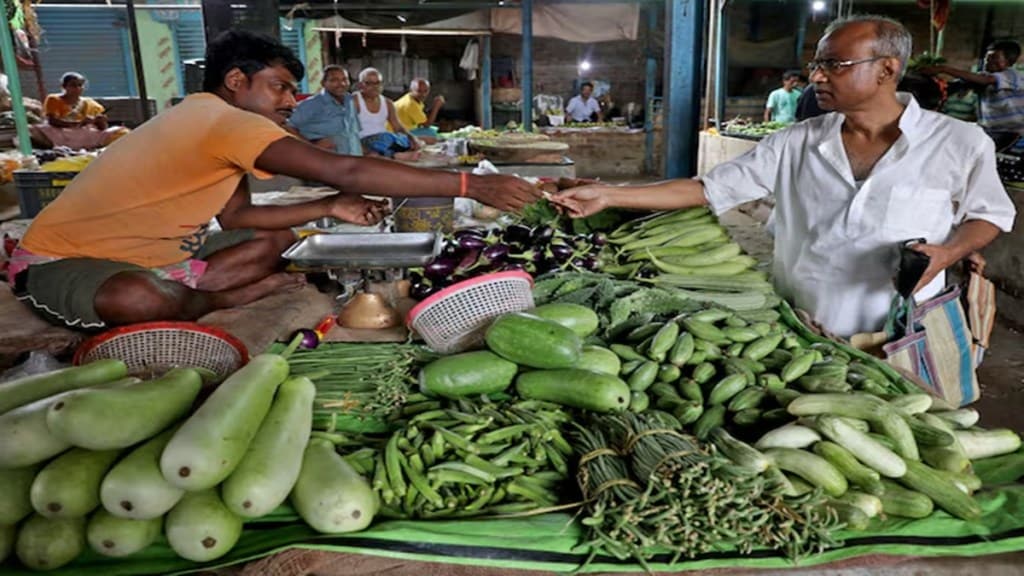India’s Consumer Price Index (CPI)-based inflation, or retail inflation for the month of February is likely to stay low, printing 4.0 per cent YoY, per estimates by BofA Securities. This will be the lowest print in 6 months. According to the brokerage firm, food prices are expected to decline incrementally, largely due to lower vegetable and meat prices, along with lower dairy and rice prices.
“Food and core inflation will likely continue to see a large gap, but the distance will shrink, as food prices continue to moderate, while core inflation remains low at 3.8 per cent YoY, now below 4 per cent for 15 consecutive months. Sequentially, headline CPI is expected to fall 0.11 per cent MoM (non seasonally adjusted), and risks to our projections are balanced, as the food price decline is still broad based, while core CPI has consistently remained weaker than our baseline projections,” said Rahul Bajoria, Head of India and ASEAN Economic Research, BofA Securities.
For FY25, BofA Securities projected headline CPI inflation at 4.8 per cent while it forecasted it to edge down to 4.1 per cent in FY26, with risks evenly balanced from lower commodity prices and a weaker rupee.
In January, India’s retail inflation stood at 4.31 per cent, down 91 basis points from 5.22 per cent in December 2024. The January CPI inflation was the lowest year-on-year inflation after August 2024. October, meanwhile, had witnessed a significant surge when CPI inflation had reached a 14-month high of 6.21 per cent.
How will vegetable ‘bhaav’ fare?
While vegetable prices have fallen sharply in the last three months on account of higher supplies, especially for potatoes and tomatoes, BofA Securities maintained that there is still scope of further large declines in vegetable prices diminishing going ahead. This, it added, will be on the back of weather turning less supportive, price levels hitting their historical lows and margins also hitting their lows.
“For February, our vegetable price tracker is still down, but is likely to fall 3.5 per cent in our projections. The big decline amongst staples has been seen in pulses, while dairy, sugar, and edible oils are moving slightly higher. We expect chicken and egg prices to fall materially given an outbreak of bird flu. Still, in the coming months, the risk of food prices rebound seasonally appears high, as India’s meteorological department is guiding for a very hot summer,” Rahul Bajoria added.
Currency weakness not showing up in inflation
The pressure on the rupee is a slow but steady source of second round effects on inflation, stated BofA Securities report, while maintaining that it adds to some upside risks to its assumptions. Still, it said, “When looking through the high frequency data, we do not see a material immediate impact being felt on inflation, except for gold and silver prices, both of which are also retracing somewhat in February. Indeed, despite a weaker currency, the falling price of brent crude oil is taking the bite out of imported inflation, except for specific items such as airline fuel.” Per the Reserve Bank of India (RBI), almost 40 per cent of the CPI basket is influenced by external factors, and for every 1 per cent depreciation in the exchange rate, around 7 bp passthrough is visible over 2-3 months.
Meanwhile, the rupee depreciated by 45 paise, its steepest single-day decline since February 25, to close at 87.33 on Monday, pressured by dollar bids spurred by the maturity of positions in non-deliverable forwards (NDF) and a fall in the Chinese yuan.
Core CPI still below 4%
Core CPI, which excludes volatile items such as food and energy and is the focus of the RBI, per BofA Securities estimates, is expected to remain rangebound at 3.83 per cent YoY, given marginally higher gold prices, and some pick up in core services as well. “We believe core CPI will likely go above 4 per cent in next three months, but weak consumption will keep a leash on underlying price pressures. As mentioned earlier, a weaker rupee is not impinging on inflation in a generalized way so far, but we remain cautious on the impact as it may take a few months to feed through,” concluded Rahul Bajoria.
The CPI data for February will be released on March 12, 2025 (Wednesday).


